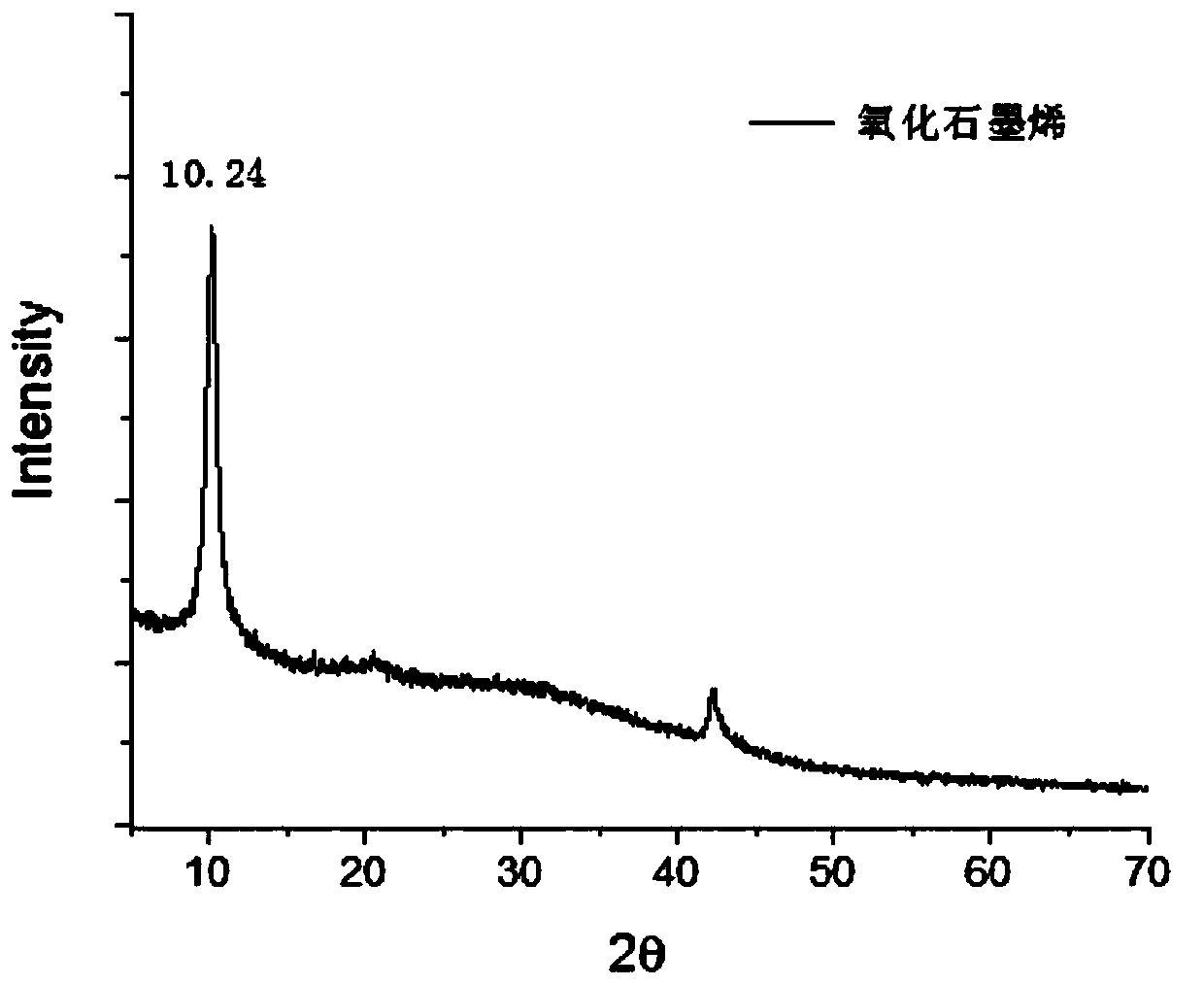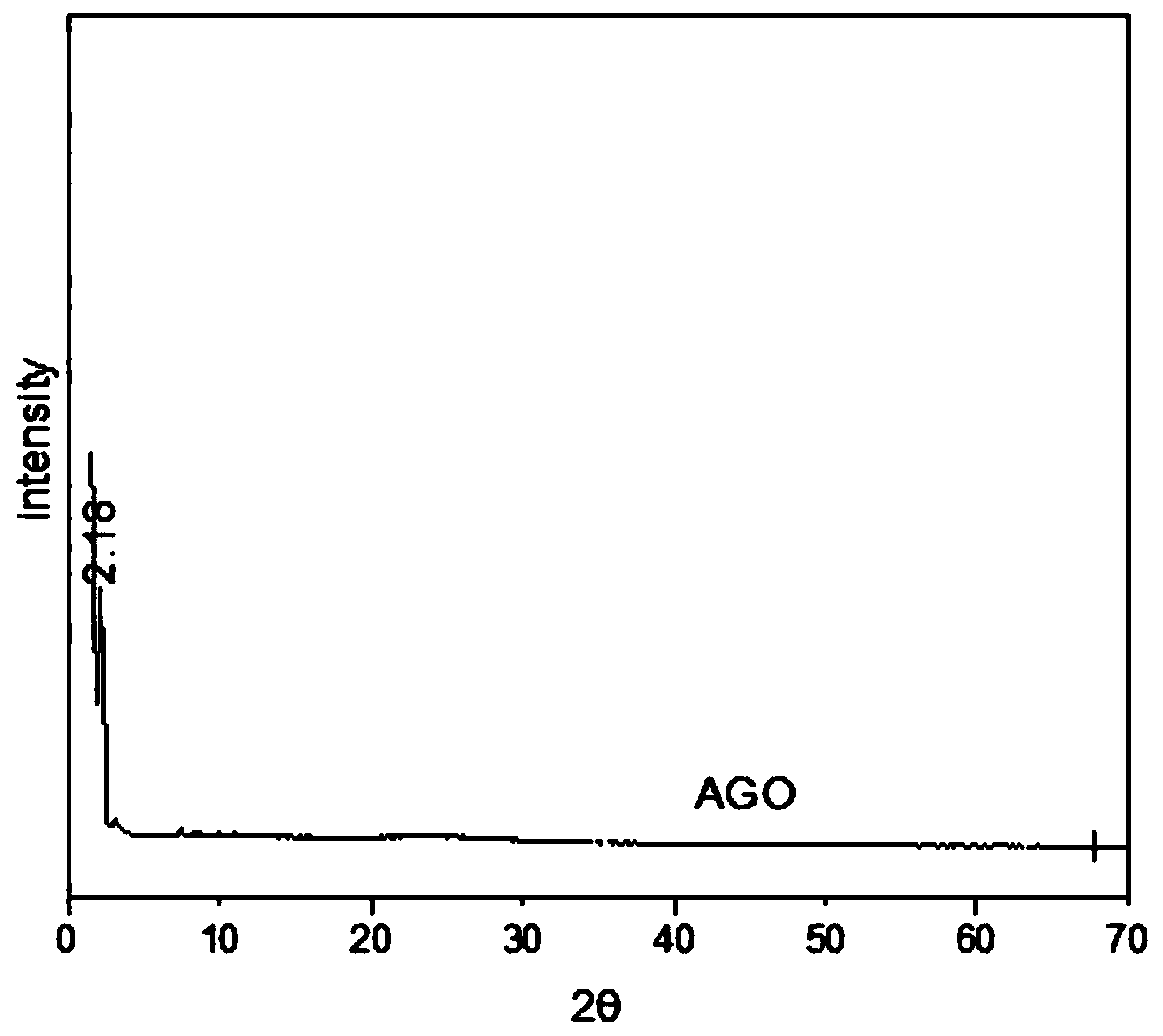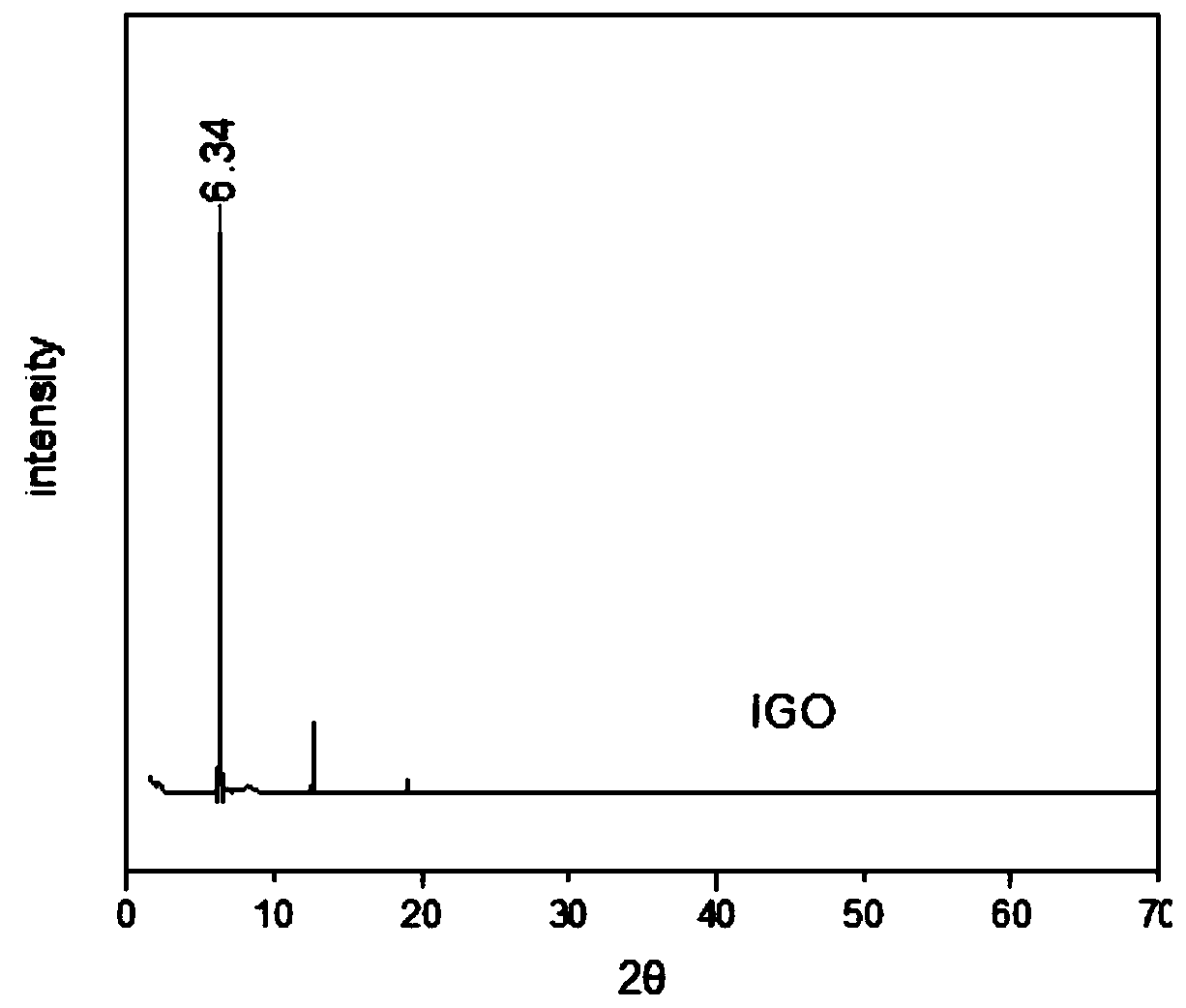Modified graphene oxide and preparation method thereof
A technology of stone oxide and graphene, applied in chemical instruments and methods, rayon manufacturing, fiber chemical characteristics, etc., can solve the problem that the number of amine groups cannot be accurately quantified, and achieve the effect of reducing crosslinking and increasing the interlayer spacing
- Summary
- Abstract
- Description
- Claims
- Application Information
AI Technical Summary
Problems solved by technology
Method used
Image
Examples
Embodiment 1
[0019] Embodiment 1, a kind of modified graphene oxide, is made by the raw material of following weight ratio, graphene oxide 10, polyamine 10, the mixture 20 that is made up of polyisocyanate and monoisocyanate, solvent 1000, wherein, in polyisocyanate The molar ratio of the isocyanate in the isocyanate to the isocyanate in the monoisocyanate is 0.5, and the molar ratio of the -NCO group in the isocyanate mixture to the -NH2 group in the polyamine is 1;
[0020] The polyamine is selected from one or more of ethylenediamine, propylenediamine, pentamethylenediamine and diethylenetriamine;
[0021] The polyisocyanate is selected from 4,4-diphenylmethane diisocyanate, 2,4-diphenylmethane diisocyanate, toluene diisocyanate, isophorone diisocyanate, hexamethylene diisocyanate, 1,4- One or more of phenylene diisocyanate, 1,3-benzene diisocyanate, and hexamethylene diisocyanate;
[0022] The monoisocyanate is selected from one or more of phenyl isocyanate, p-toluene isocyanate, m-to...
Embodiment 2
[0025] Embodiment 2, a kind of modified graphene oxide, is made by the raw material of following weight ratio, graphene oxide 10, polyamine 50, the mixture 200 that is made up of polyisocyanate and monoisocyanate, solvent 2000, wherein, in polyisocyanate The molar ratio of the isocyanate in the isocyanate and the isocyanate in the monoisocyanate is 2.5, and the molar ratio of the -NCO group in the isocyanate mixture to the -NH2 group in the polyamine is 1.25; the selection of each raw material is the same as in Example 1.
[0026] The preparation method is as follows: dissolving and dispersing graphene oxide in a solvent to obtain a dispersion liquid, adding polyamine to the dispersion liquid, raising the temperature to 120°C after adding, performing reduction modification reaction on graphene oxide, and reacting After 48 hours, the temperature was adjusted to 100°C, and a mixture of polyisocyanate and monoisocyanate was added. After 48 hours of reaction, the product was washed...
Embodiment 3
[0027] Example 3, a modified graphene oxide, prepared from the following raw materials in weight ratio, graphene oxide 10, polyamine 25, a mixture of polyisocyanate and monoisocyanate 100, solvent 500, wherein, in the isocyanate mixture The molar ratio of the -NCO group to the -NH2 group in the polyamine is 1.00, and the molar ratio of the isocyanate in the polyisocyanate to the isocyanate in the monoisocyanate is 4.80; the selection of each raw material is the same as in Example 1.
[0028] The preparation method is as follows: dissolving and dispersing graphene oxide in a solvent to obtain a dispersion liquid, adding polyamine to the dispersion liquid, raising the temperature to 100°C after adding, performing reduction modification reaction on graphene oxide, and reacting After 25 hours, the temperature was adjusted to 70°C, and a mixture of polyisocyanate and monoisocyanate was added. After 24 hours of reaction, the product was washed with acetone, centrifuged, and dried to ...
PUM
 Login to View More
Login to View More Abstract
Description
Claims
Application Information
 Login to View More
Login to View More - R&D
- Intellectual Property
- Life Sciences
- Materials
- Tech Scout
- Unparalleled Data Quality
- Higher Quality Content
- 60% Fewer Hallucinations
Browse by: Latest US Patents, China's latest patents, Technical Efficacy Thesaurus, Application Domain, Technology Topic, Popular Technical Reports.
© 2025 PatSnap. All rights reserved.Legal|Privacy policy|Modern Slavery Act Transparency Statement|Sitemap|About US| Contact US: help@patsnap.com



